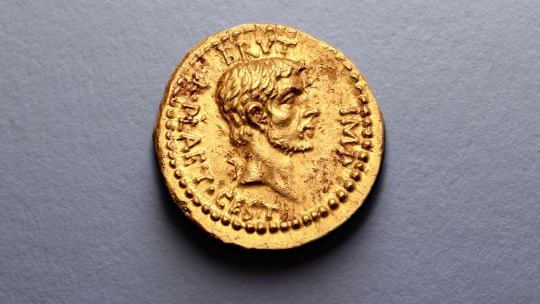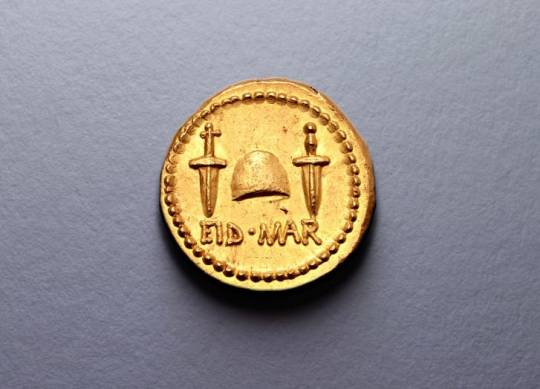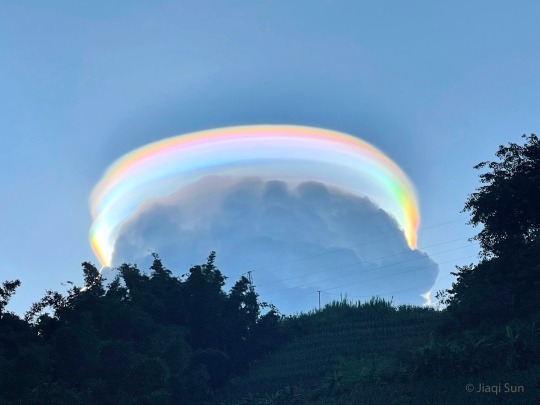#pileus cap
Text

Pileus Cap - cg photography
2 notes
·
View notes
Text
Ok so basically. Some of my myconids can bleed (Strychnine & Pileus) because they're either hybrids of milk cap mushrooms or ink cap mushrooms. (Strychnine is part ink cap & Pileus is a corrupted indigo milk cap.) Pileus' blood looks like the bit of blue on the thumb in this picture, and Strychnine's blood looks like... Well... Ink!


Spore doesn't bleed because he's a red cap toadstool, which doesn't have any milk or interesting decomposing properties.
#faust speaks 🍄#oc nonsense#i wanna revamp pileus so she resembles her mushroom species a bit more#& then strychnine is ink cap x yellow fly agaric x cactus x mycena chlorophos
0 notes
Text
☁️ Pileus Clouds ☁️

An Iridescent Pileus Cloud over China
Pictured, behind this darker cloud, is a pileus iridescent cloud, a group of water droplets that have a uniformly similar size and so together diffract different colors of sunlight by different amounts. The formation of a rare pileus cloud capping a common cumulus cloud is an indication that the lower cloud is expanding upward and might well develop into a storm.

Same sighting from another view


#Iridescent Pileus Cloud#rainbow clouds#scarf clouds#cumulus clouds#pileus cloud#nephology#meteorology
313 notes
·
View notes
Photo


Very Rare Roman Gold Coin is Returned to Greece
A Very Rare Gold Coin, Minted by Brutus to Mark Caesar’s Death, Is Returned to Greece
The gold coin, which dates from 42 B.C. and is valued at $4.2 million, is thought to have been looted from a field near where an army loyal to Brutus camped during the struggle for control of Rome.
A rare and ancient gold coin that morbidly celebrates the stabbing death of Julius Caesar was returned this week to Greek officials by investigators in New York who had determined it was looted and fraudulently put up for sale at auction in 2020.
The coin, known as the “Eid Mar” and valued at $4.2 million, features the face of Marcus Junius Brutus, the onetime friend and ally of Caesar who, along with other Roman senators, murdered him on the Ides of March in 44 B.C. According to historians and experts, Brutus had the coins minted in gold and silver to applaud Caesar’s downfall and to pay his soldiers during the civil war that followed the killing.
The return Tuesday came at a ceremony attended by officials of the Manhattan district attorney’s Antiquities Trafficking Unit and U.S. Homeland Security Investigations, who cooperated on the case.
The coin, one of 29 artifacts returned to Greek officials, was given up earlier this year by an unidentified American billionaire who, investigators said, had bought it in good faith in 2020. The British dealer who helped to arrange the sale was arrested in January, and the coin itself was recovered in February, officials said.
Experts said the coin, minted two years after Caesar’s death, is about the size of a nickel and weighs about 8 grams, and is one of only three known to be in circulation. A silver version of the coin was also minted and about 100 are known to exist. Those can sell for $200,000 to $400,000.
“The Eid Mar is an undisputed masterpiece of ancient coinage,” Mark Salzberg, the chairman of Numismatic Guaranty Corp., which verified the coin but does not research provenances, said in a statement in 2020.
Experts said they believe the coin was likely discovered more than a decade ago in an area of current-day Greece where Brutus and his civil war ally, Gaius Cassius Longinus, were encamped with their army.
The front, or obverse, of the coin features an engraved side view of Brutus and the Latin letters “BRVT IMP” and “L PLAET CEST.” Experts say the former stands for “Brutus, Imperator,” with imperator referring not to emperor but to commander. The latter stands for Lucius Plaetorius Cestianus, who was a treasurer of sorts for Brutus and oversaw the minting and assaying of his coins.
The reverse features two daggers on either side of a cap known as a pileus. The daggers stand for Brutus and Cassius and reflect the manner of Caesar’s death, experts say, while the cap is a symbol of liberty that was worn by freed slaves. Overall, the image is meant to celebrate the murder as an act by which Rome was liberated from Caesar’s tyranny. Beneath the symbols is the Latin inscription “EID MAR,” designating the Ides of March — March 15, 44 B.C. — the fateful day on which the conspirators left Caesar dead on the floor of the Roman Senate.
Historians see irony in the fact that Brutus, who had admonished Caesar before the murder for the self-aggrandizing act of putting his face on Roman coinage, wound up doing the same with his own coins.
Ultimately, the forces who favored the dead Caesar, led by Mark Antony and others, defeated Brutus and his men in October of 42 B.C. at the Second Battle of Philippi, and Brutus and Cassius committed suicide.
According to investigators, the coin is first thought to have come to market between 2013 and 2014. Richard Beale, 38, director of the London-based auction house Roma Numismatics, put it up for sale on his company’s website and over several years shopped it at coin shows in the United States and Europe before it was sold in October 2020. The $4.2 million was the most ever paid for an ancient coin, according to the Numismatic Guaranty Corp.
Mr. Beale is charged with grand larceny in the first degree and several other felonies and was released on his own recognizance. His lawyer, Henry E. Mazurek, declined to comment on the case.
Among the other Greek antiquities repatriated on Tuesday were figurines of people and animals; marble, silver, bronze and clay vessels; and gold and bronze jewelry. Their total value was put at $20 million.
In remarks at the ceremony, Konstantinos Konstantinou, Greece’s consul general in New York, said his country has been hit hard by the illicit trading of antiquities and is seeking their return “in every possible way.”
He praised investigators for “striking down the illegal international criminal networks whose activity distorts the identity of peoples, as it cuts off archaeological finds from their context and transforms them from evidence of people’s history into mere works of art.”
By Tom Mashberg.
#Very Rare Roman Gold Coin is Returned to Greece#Julius Caesar#Marcus Junius Brutus#Eid Mar#gold#gold coin#collectable coin#ancient artifacts#history#history news#ancient history#ancient culture#ancient civilizations#roman history#roman empire#Mark Antony#Second Battle of Philippi#long reads
205 notes
·
View notes
Text
FOTD #119 : sweet tooth! (hydnum repandum)
the sweet tooth mushroom (also wood hedgehog or hedgehog mushroom) is a toothed fungus in the family hydnaceae. it forms mycorrhizal associations with both deciduous & coniferous trees :-) it is widespread in europe, but also grows in canada !!
the big question : can i bite it??
yes<3 it is edible & said to taste sweet or nutty, with a crunchy texture. red squirrels also eat them :-)


h. repandum description :
"the orange-, yellow- or tan-coloured pileus (cap) is up to 17 cm (6+1⁄2 in) wide, although specimens measuring 25 cm (10 in) have been documented. it is generally somewhat irregular in shape (it may be convex or concave at maturity), with a wavy margin that is rolled inward when young. caps grow in a distorted shape when fruit bodies are closely clustered. the cap surface is generally dry & smooth, although mature specimens may show cracking. viewed from above, the caps of mature specimens resemble somewhat those of chanterelles. the flesh is thick, white, firm, brittle, & bruises yellow to orange-brown. the underside is densely covered with small, slender whitish spines measuring 2–7 mm (3⁄32–9⁄32 in) long. these spines sometimes run down at least one side of the stipe. the stipe, typically 3–10 cm (1–4 in) long & 1–3 cm (1⁄2–1+1⁄4 in) thick, is either white or the same colour as the cap, & is sometimes off-centre."
[images : source & source]
[fungus description : source]
"you do not understand how badly i want to stuff this shit in my mouth."
#• fungus of the day !! •#[hydnum repandum]#: sweet tooth :#: hedgehog mushroom :#: wood hedgehog :#119#||#mushrooms#mushroom#mycology#earth#nature#cottagecore#foraging#forestcore#fungus#fungi#hydnum repandum#sweet tooth#hedgehog mushroom#wood hedgehog#fotd#fungus of the day#undescribed#image undescribed
81 notes
·
View notes
Text

Pictured, behind this darker cloud, is a pileus iridescent cloud, a group of water droplets that have a uniformly similar size and so together diffract different colors of sunlight by different amounts. The featured image was taken last month in Pu'er, Yunnan Province, China. Also captured were unusual cloud ripples above the pileus cloud. The formation of a rare pileus cloud capping a common cumulus cloud is an indication that the lower cloud is expanding upward and might well develop into a storm.
Image Credit & Copyright: Jiaqi Sun (å™å˜‰çªï¼‰
#astronomy#space#science#universe#cloud#rainbow#pileus#pileus cloud#storm#cumulus#cumulus cloud#China#photography#follow#like#reblog#the first star#the first starr#thefirststar#thefirststarr#nasa#apod#pretty#tumblr#blog#colours
234 notes
·
View notes
Photo

2022 September 6
An Iridescent Pileus Cloud over China
Image Credit & Copyright: Jiaqi Sun (孙嘉琪)
Explanation: Yes, but how many dark clouds have a multicolored lining? Pictured, behind this darker cloud, is a pileus iridescent cloud, a group of water droplets that have a uniformly similar size and so together diffract different colors of sunlight by different amounts. The featured image was taken last month in Pu'er, Yunnan Province, China. Also captured were unusual cloud ripples above the pileus cloud. The formation of a rare pileus cloud capping a common cumulus cloud is an indication that the lower cloud is expanding upward and might well develop into a storm.
∞ Source: apod.nasa.gov/apod/ap220906.html
143 notes
·
View notes
Text
I would look so cool in a pileus cap like one of those Ancient Greek people
4 notes
·
View notes
Photo

The Eid Mar Coin, aka the Ides of March Coin
This is one of the rarest Roman coins, issued between 43 and 42 BCE by Brutus to celebrate the assassination of Julius Caesar. It was minted in both silver and gold, and only three of the gold ones survive. The coins were struck by a military mint which traveled with Brutus (he was somewhere in northern greece at the time, fighting in the Liberators’ civil war), possibly to pay his army.
Obverse: A bust of Brutus, “BRVT IMP” (for “Brutus, Imperator”, referring not to emperor but to commander), and “L PLAET CEST” (for “Lucius Plaetorius Cestianus,” a treasurer who minted the coin for Brutus)
Reverse: A pileus cap (Roman symbol of freedom, often worn by recently freed slaves) flanked by two daggers (the Roman pugio), and “EID MAR” (for the Ides of March)
In 2020, one of the three gold coins was sold at a London auction to a US-based buyer for a record £3,240,000. It had suddenly appeared on the international art market in 2016, it was offered for sale in Munich with no provenance, and from there it went to London. Turns out it got smuggled to London: the coin had apparently been looted from a field near where Brutus’ army was encamped. In 2023, the American authorities seized it and returned it to greece, and the London dealer was arrested on charges of grand larceny. He has admitted to smuggling, possibly as part of a plea deal.
[sources: wikipedia, CNN Oct 2020, The New York Times Feb 2023]
30 notes
·
View notes
Text



Mushrooms grown by Brock Lee on Facebook
●▬▬▬▬▬▬▬▬▬▬▬▬▬๑۩۞۩๑.▬▬▬▬▬▬▬▬▬▬▬▬▬●
A mushroom or toadstool is the fleshy, spore-bearing fruiting body of a fungus, typically produced above ground, on soil, or on its food source. Toadstool generally denotes one poisonous to humans.[1]
The standard for the name "mushroom" is the cultivated white button mushroom, Agaricus bisporus; hence the word "mushroom" is most often applied to those fungi (Basidiomycota, Agaricomycetes) that have a stem (stipe), a cap (pileus), and gills (lamellae, sing. lamella) on the underside of the cap. "Mushroom" also describes a variety of other gilled fungi, with or without stems, therefore the term is used to describe the fleshy fruiting bodies of some Ascomycota. These gills produce microscopic spores that help the fungus spread across the ground or its occupant surface.
Forms deviating from the standard morphology usually have more specific names, such as "bolete", "puffball", "stinkhorn", and "morel", and gilled mushrooms themselves are often called "agarics" in reference to their similarity to Agaricus or their order Agaricales. By extension, the term "mushroom" can also refer to either the entire fungus when in culture, the thallus (called mycelium) of species forming the fruiting bodies called mushrooms, or the species itself.
37 notes
·
View notes
Text
MCX Rants: Cloning
r/ContamFam mycopal asks: “Hey pal do you have any good tips or sources for info on moving mushroom tissue to agar?”
MCX Answers: The way I understand it is: you can do two types of transfers for cloning, considered most common and effective.
One is as you mentioned the splitting stipe and taking a transfer from inside the stipe. You want to ensure that your area, yourself, and your tools are cleaned with isopropyl alcohol 70% . You will tear from the base up towards the cap, with the exposed part of the STIPE, towards your laminar flow, or towards the back of your still airbox. you only need a rice size piece of transfer.
Often the inner flesh is very stringy and breaks away quite easily. I’ll personally just cut a rice size cut in a square shape from the inner part of the stipe and then gently poke that and pull it out and put it on a plate. Sometimes inner Mycelium flesh can pull away and you can put that on a plate. The mushroom fruit body is all mycelium. Everything about it is made from mycelium, and arguably all of its components, contain but also can, either: produce or generate, and proliferate mycelium from that fruit body.
The second way involves approaching the xfer from the topside of the cap, ‘dorsal’ and cutting open the center dorsal point and then take from inside the cap at the pileus-stipe junction… but from within the cap… its a little more technical and often can expose the xfer to contam from the flesh u open up before taking xfer if you arent careful in how you peel back the external flesh and when you push the knife into the cap it can push microbes down into the previously unexposed inner mycelial tissue).
The idea for these types of transfers is that contaminants in your environment that float in around you or fall off of you, if present, likely is on or near your external fruitbody. If you take from the inside of the fruitbody its arguable that its more clean and free of contaminant microbes as the primordia formation is assumedly on healthy uncontaminated mycelium and unless the flesh tears during maturation, the inner parts are fully protected from external contaminant sources while growing.
Sometimes these cooccurring microbes are harmless to your grow and to you, and can even be beneficial (like certain yeasts that are used in agar preparation) or even some naturally occurring bacteria in the substrate! I think of my tubs as a homeostatic localized microclimate - environment :)
Our tubs, and the fungi in them have similar homeostasis in the wild, and can be conceptually applied to community mycology cultivation!
I think of comparing potential “microcosm” cultivation much like the human body, external and internal… theres always gonna be contaminant microbes on our skin and around our mucosal membranes, but with proper hygiene and diet our body is its own microcosm of microbes that are fucking and fighting away under our literal noses xD —- its when one grouping of these microbes begins to advantage over the equalized body microcosm we have (think if you dont bathe you may develop yeast and bacterial infections more easily as surface conditions of your skin and within your creases, nooks and crannies will can be overpowered by something that spreads… )
and thats kind of the basic idea of germ theory I think… and I also think it applies to our grow environments if approach cultivation holistically :)
surely im missing technical nuance but I know my thoughts are in the spirit of the theory!
Hope my thoughts aid your mycojourney!
-MCX
Related resources:
- Yoshi Cloning vid and result video
- PGT Cloning Vid
- Ashley/Boomer Shroomer Cloning vid
#mcx#mcx rants#mcx answers#mcxrants#mycology#lgbtqia2s#magic mushies#microbiology#mold#60s psychedelia#lgbtqia#lgbtqia2s+#myc#enby#mushroom#fungus#fungi#queer#non binary#nonbinary
6 notes
·
View notes
Text
Touhou OC ideas swirled around into a different direction and now I've got a mess of symbols packed into a very minor personification from Greek mythology who only ever appeared as an anonymous part of a group. She has tried to go from "personification of trolling and galaxy-brain takes" to "goddess of democracy" and then has ended up as "moderately bad at anarchism but trying to do it with gods and youkai anyways".
Her dress has a combined Chaos Star and Ishtar star, Discordian Sacred Chao (with an attempt at a slightly more magatama-like shape to the two sides of the symbol), and a cornucopia with a prominent rice plant on it. She wears a mural crown adapted to classical Chinese city walls. Her belt has a buckle in the shape of a rudder from Classical Antiquity and she has a brimless knit cap on a pike along with her torch, like a demented take on the Roman pileus.
Her ability is to know how to say things that are simultaneously attractive and repellent.
6 notes
·
View notes
Note
Requesting to take a bite outta Morell I know he will kill me and is most definitely made out of a non edible shrooms but he just looks so good let me get a bite please I'm begging
[Horrible idea anon, just terrible, you feral little beast.]
In a brilliantly ironic and almost offensive twist of fate, Morell is actually horrified of being chased after for being a mushroom monster. Believe it or not, the spores that are produced by his cap are quite valuable for a plethora of products out there, mostly medical salves and whatnot. His kind is somewhat harassed because of this feature, especially when in heat. Part of the reason why Morell has so much cake is because he doesn't want to have to deal with any less-than-friendly requests for spores... You'd think twice about whacking a buff 7'3" monster, wouldn't you?
Morell is very proud of his pileus, it's a rather sizable one for monsters of his kind and has caught the attention of many potential partners. Furthermore, he has bright colors and many marks everywhere on his body (except the face), which only adds to his allure as a male. You can begin to understand why Morell would not take kindly to anyone wanting to take a bite out of him. The only part of his figure that can be effectively bitten off by a human is part of his cap, which then slowly regrows. That's not an invitation, you'll regret trying. Morell can and will gladly "de-fang" you should you prove yourself a troublesome piglet- Maybe just use a muzzle, if you're good.
Part of him is a little flattered though, it's almost heart-warming to see someone as eager to taste him as he is to taste them. Morell feels cherished, in a very unhealthy and disgusting sort of way. If you behave extra well, the mushroom monster will offer you a tiny portion of his prized cap- Properly cooked so you don't get poisoned.
Morell tastes a little more gooey than the average mushroom, perhaps a tiny bit spicy. You'll get a very small high from eating a part of his pileus.
109 notes
·
View notes
Text
NASA Picture of the day
An Iridescent Pileus Cloud over China Yes, but how many dark clouds have a multicolored lining? Pictured, behind this darker cloud, is a pileus iridescent cloud, a group of water droplets that have a uniformly similar size and so together diffract different colors of sunlight by different amounts. The featured image was taken last month in Pu'er, Yunnan Province, China. Also captured were unusual cloud ripples above the pileus cloud. The formation of a rare pileus cloud capping a common cumulus cloud is an indication that the lower cloud is expanding upward and might well develop into a storm. September 06, 2022

45 notes
·
View notes
Note
A mushroom or toadstool is the fleshy, spore-bearing fruiting body of a fungus, typically produced above ground, on soil, or on its food source. Toadstool generally denotes one poisonous to humans.
The standard for the name "mushroom" is the cultivated white button mushroom, Agaricus bisporus; hence the word "mushroom" is most often applied to those fungi (Basidiomycota, Agaricomycetes) that have a stem (stipe), a cap (pileus), and gills (lamellae, sing. lamella) on the underside of the cap. "Mushroom" also describes a variety of other gilled fungi, with or without stems, therefore the term is used to describe the fleshy fruiting bodies of some Ascomycota. The gills produce microscopic spores which help the fungus spread across the ground or its occupant surface.
Forms deviating from the standard morphology usually have more specific names, such as "bolete", "puffball", "stinkhorn", and "morel", and gilled mushrooms themselves are often called "agarics" in reference to their similarity to Agaricus or their order Agaricales. By extension, the term "mushroom" can also refer to either the entire fungus when in culture, the thallus (called mycelium) of species forming the fruiting bodies called mushrooms, or the species itself.
Why did i do this, fun? Boredom? all I know is mushrooms are cool -🍄
Y'all so funny omg
5 notes
·
View notes
Photo

The most expensive coin ever sold on an auction was this, a gold coin minted shortly after the murder of Julius Caesar by the senators that conspired his murder, one side portraying Marcus Junius Brutus and the other side having “Eidibus Martiis” - or March 15th - and two daggers celebrating the murder, as well as a “pileus”-cap, which was worn at certain ceremonies.
It was sold in 2021 for a sum of 4.2 million USD.
At a later date, however, Homeland Security ordered this item along with some others to be confiscated as the documentation for them were forgeries. They are now in the hands of Greek authorities.
2 notes
·
View notes